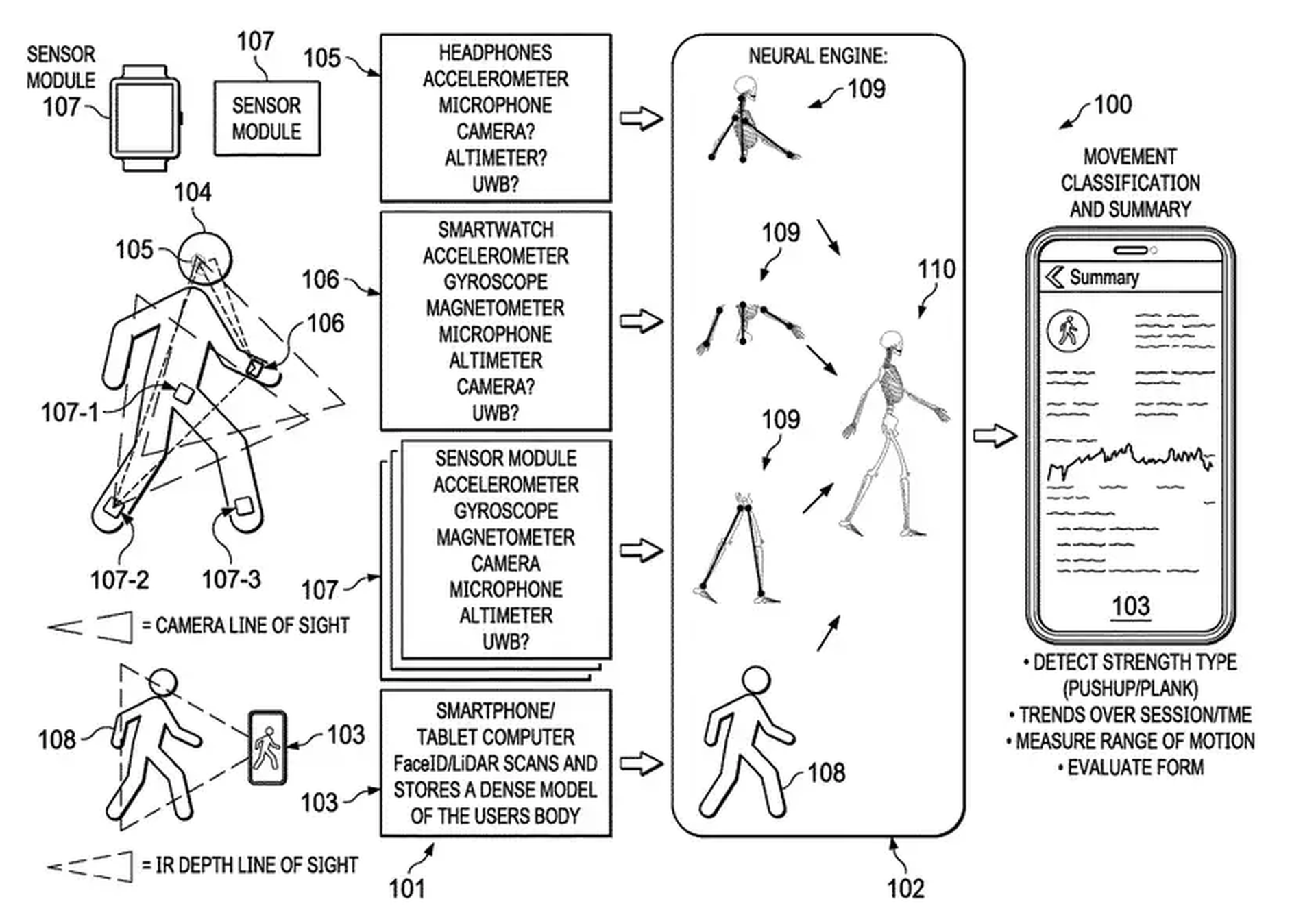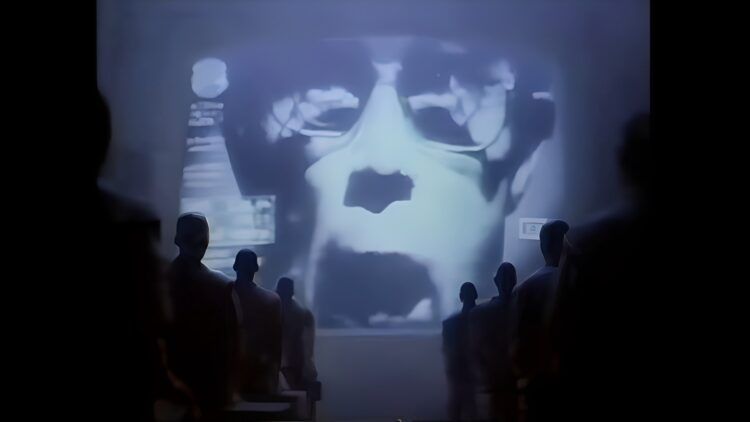Most recent Apple patents are all focused on tracking your entire body. Two Apple patents, originally submitted in 2021 and 2022 and made public on Thursday, provide a range of ideas for tracking a body’s every movement and location using already-available Apple goods. Users wearing a “headset” and yet another gadget to track posture are mentioned in one of the patents. The other study suggests tracking a user’s every motion using wearable technology that is widely available.
The prior patent covers a few use cases beyond what can be performed with just a simple accelerometer. It might also detect a user’s posture, whether they’re sitting or standing or shifting to one or the other. The sensors might be used to detect whether a person is inside a car or warn them of approaching obstacles. The second patent discusses employing almost any wearable gadget, such as smartwatches and ear devices, to detect all bodily movements. To “reconstruct a full body 2D bone model,” this would entail inertial sensors that could be incorporated into an Apple Watch or AirPods in addition to point-of-view video data.
How do Apple patents show the tracking process?
Apple’s technologies, including the accelerometers in the Apple Watch, allow it to automatically recognize that you are walking. A recently submitted set of Apple patents also apply for a camera for the Apple Watch that was intended to detect movement.
The latest Apple patents specifically mention measuring a user’s head location in relation to the rest of their body in the first patent. The usage of this in Apple’s Spatial Audio apps, where motion from the headset might flow into the sound placement software, is specifically mentioned in the patent. Also, Apple outlines how the system should change from its stationary and sitting mode to a walking mode when a user using a headset is standing up to leave while seated at a table.

The Cupertino company’s long-gestating mixed reality headgear may include this technology. The company hopes to release the headset this year, but there have apparently been numerous production and technical problems that have caused delays. Apple analyst Ming-Chi Kuo tweeted on Thursday that the manufacture of the smartphone has been delayed until the third quarter of this year. If this is the case, the MR headset will probably not make an appearance at the upcoming WWDC 2023, which is scheduled for this June. Here’s What does Apple offer us at WWDC 2023?
The second patent particularly describes other “health monitoring” use cases as well as how the movement tracking technology can be used “by a fitness application” to calculate particular metrics like calories burned.
Apple is developing technology to scan a user’s entire body, according to a patent that was made public earlier this month. In the same way that smartphones use a biometric face scan to unlock a phone, these external infrared sensors would be able to map the full body. The company’s patent specifically stated how this could be applied to apps for fitness and health.
While patents alone shouldn’t be interpreted as proof that a corporation is actively developing a new technology, along with preceding documents, they show that Apple has given the idea of developing fitness applications that include full-body tracking serious consideration. Apple already appears to be in a position to add more health-related functions to its device lineup, in addition to recent rumors that the tech giant has made progress to integrate glucose tracking in its smartwatches.





